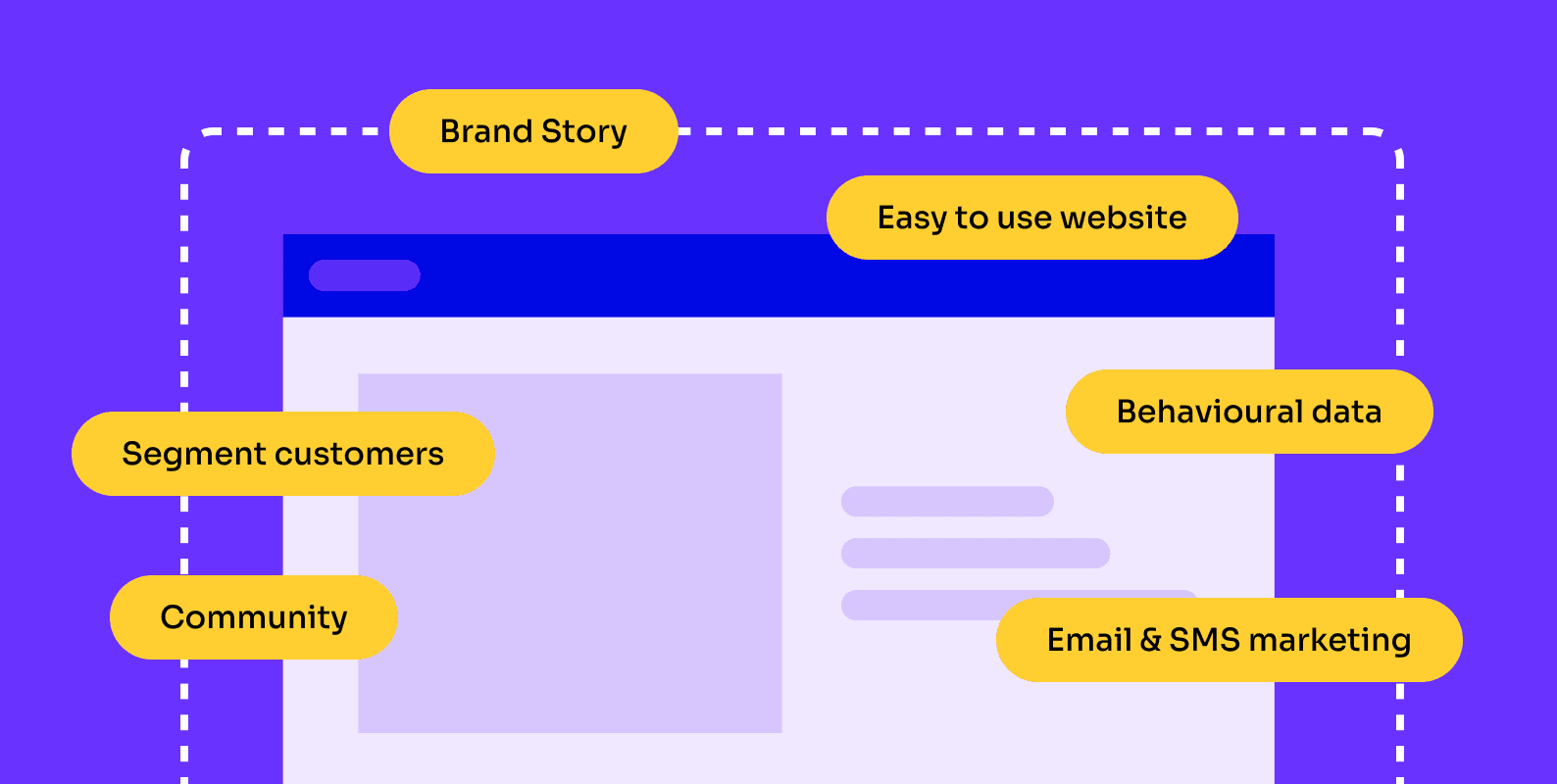Living in a post-pandemic world, retail businesses have been considered dull. Evidently, D2C (Direct To Consumer) businesses have been scaling new heights with the right ecommerce growth strategy. More manufacturers have switched to the ecommerce route to take advantage of the D2C approach by selling directly to end customers. Wondering what growth strategies are used? Let’s take a close take at startup growth & implementing a conversational strategy example.
The D2C model helps eliminate the middleman and caters directly to consumers to deliver products conveniently and quickly. Taking notes from big established ecommerce businesses, other manufacturers are building their D2C ecommerce to engage with customers directly. This has helped them take full control of all aspects, including manufacturing, marketing, packaging, and delivering to the end customer. In turn, better understand customers’ requirements and brand preferences to develop targeting products. You can find all the information if you are curious about ecommerce growth strategy.
Everything is not sunny. It comes with its challenges and shortcomings. To name a few –
- Developing scalable ecommerce websites,
- Marketing strategies,
- Lead & traffic generation,
- Logistics & Delivery chain,
- Sales and Customer service, etc.
To start a D2C business, these ecommerce growth strategies must be established and developed from the ground up.
Strategies to make your ecommerce brand stand out:
1) Develop a unique brand story and mission statement.
You can build a lasting brand image by telling stories instead of just focusing on selling. Connect the story to how your direct-to-consumer (DTC) product will help your customers and how it will solve their problems. This will make your audience more interested in what you have to say. Put it all together with a real voice for your brand to help people remember it, and you have a story to tell.
(continue reading: An Intriguing New Approach to Brand Storytelling in Ecommerce)
Brand Example – Rothy’s
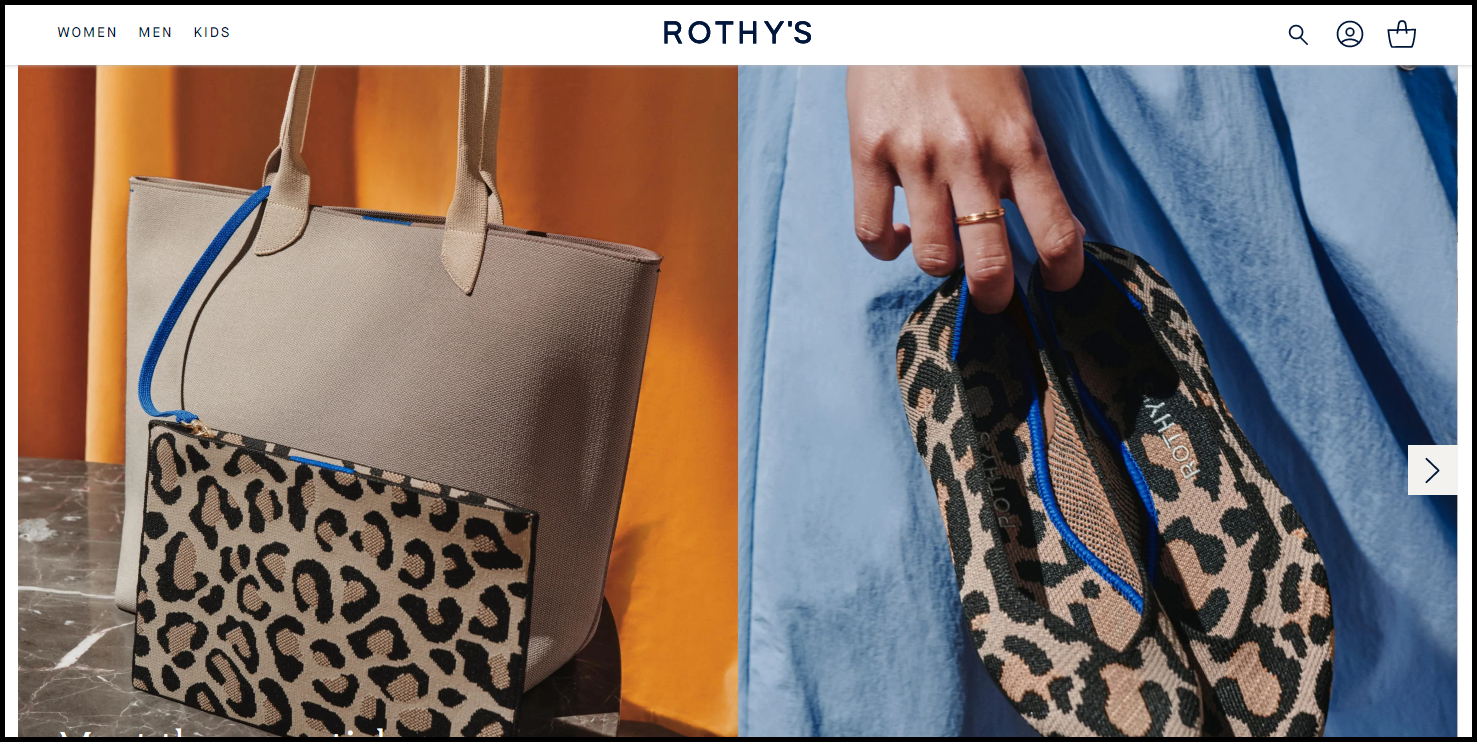
Instead of just selling their products and following the usual path of “what looks good,” Rothy’s tells a special story about sustainability, what it means, and how their manufacturing process makes sure they make products with a purpose.
2) Create a visually appealing and easy-to-use website.
Simple and easy-to-use interface design is the key mantra for developing a successful ecommerce growth strategy.”Visualize the website design from the customer’s point of view to make it more accessible and a breeze to navigate for online shopping.” Using high-quality images and professional content helps provide customers with a clear and impactful browsing experience.
Brand Example – Etsy
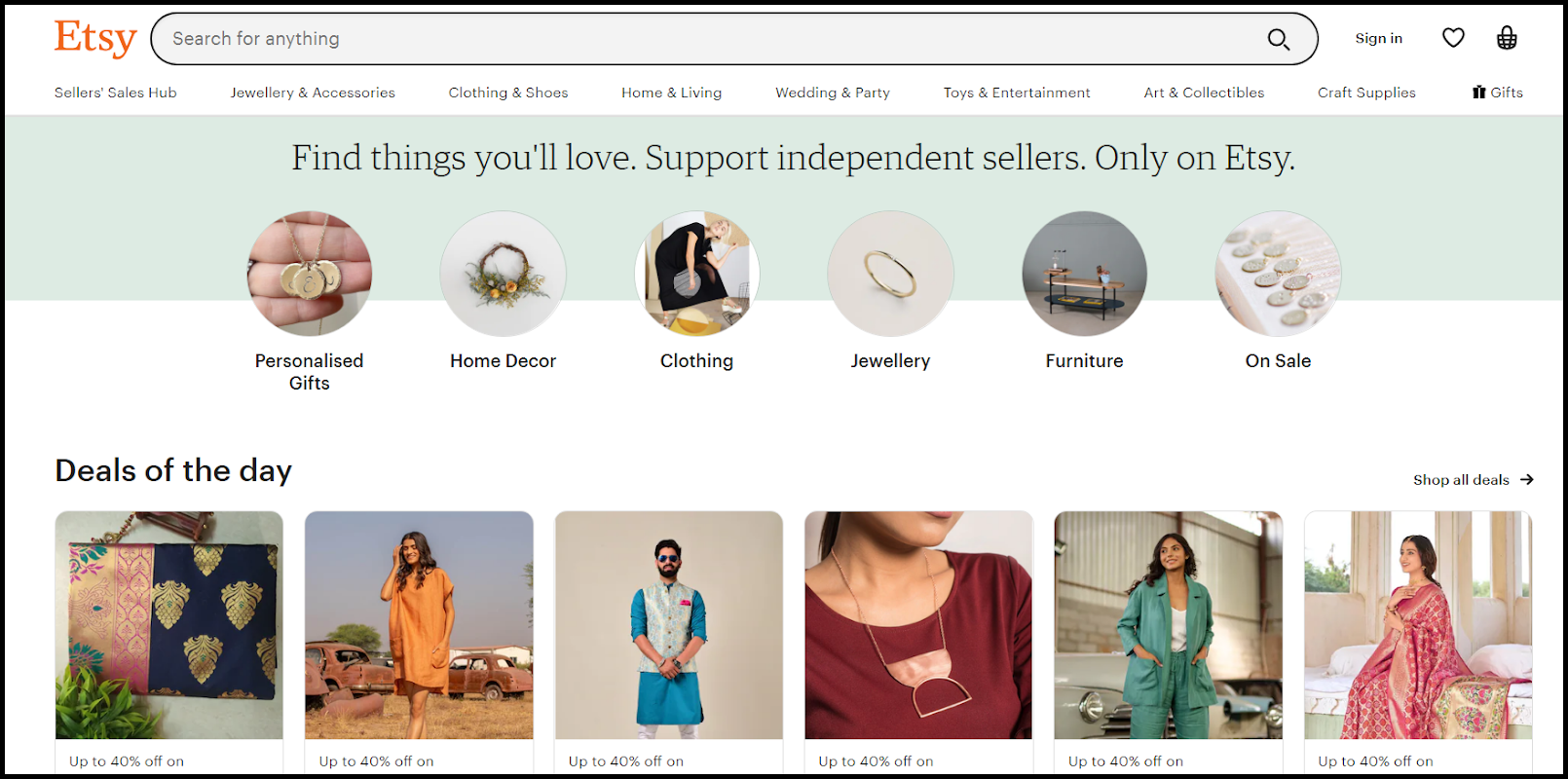
Without cluttering the homepage with offerings and word stuffing, Etsy relies on pleasant visual images and easy-to-use sections. This platform has been rated as having among the most simple and easy-to-navigate user interface website designs by their customers.
3) Build a community around your brand.
Creating a robust community around your brand helps establish brand authority for future potential customers and determine your best ecommerce growth strategy. You can offer community members the opportunity to share reviews, feedback, and other brand content to develop long-term brand trust and exposure in the ecommerce industry.
(continue reading: How to Build a Loyal DTC Brand Community)
Brand Example – GoPro
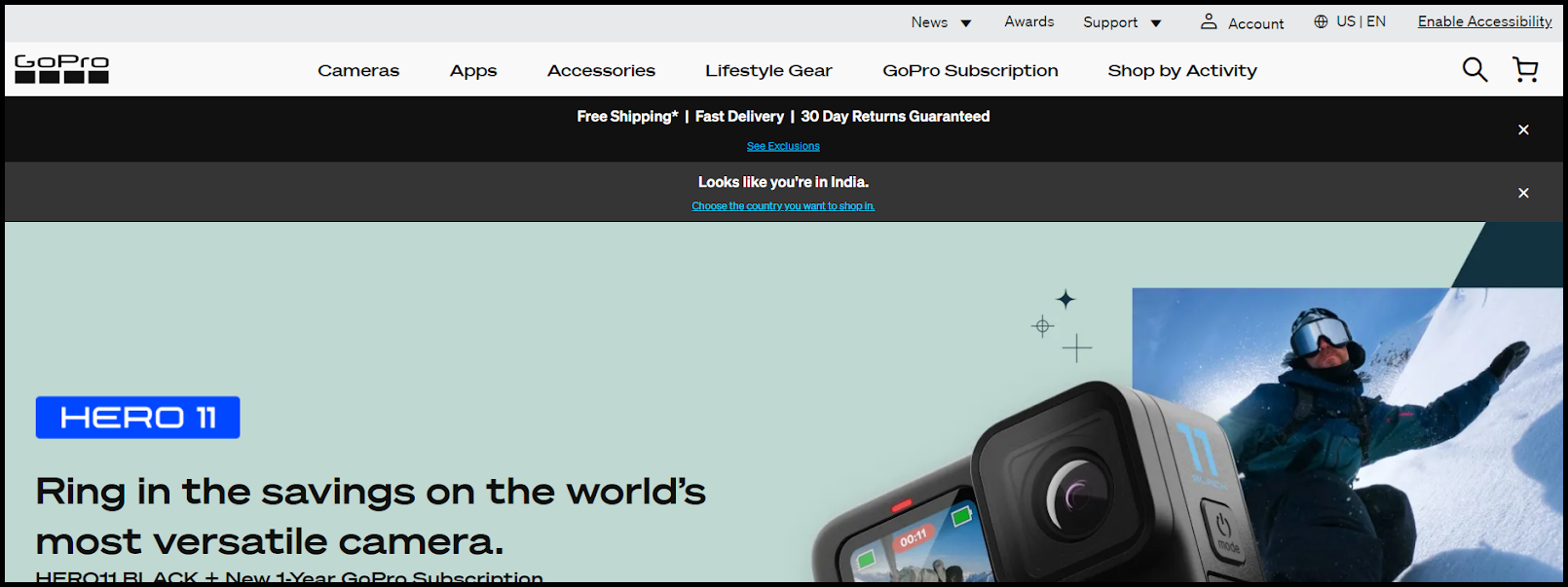
GoPro has become the brand ambassador for all types of action sports and games. Their thriving brand community and fan base were the driving forces behind their increased brand awareness and marketing strategy. They broadened their brand community to include travelers, content creators, and enthusiasts in order to establish themselves as the marker leader.
4) Collaborations with influencers and micro-influencers
According to recent research, influencer marketing is one of many brands’ most effective growth strategies. Collaboration with influencers and micro-influencers will greatly increase the reach of your brand on social media platforms. To target your brand’s awareness to a particular audience, you should collaborate with exclusive influencers who can establish the same.
Brand Example – Wish
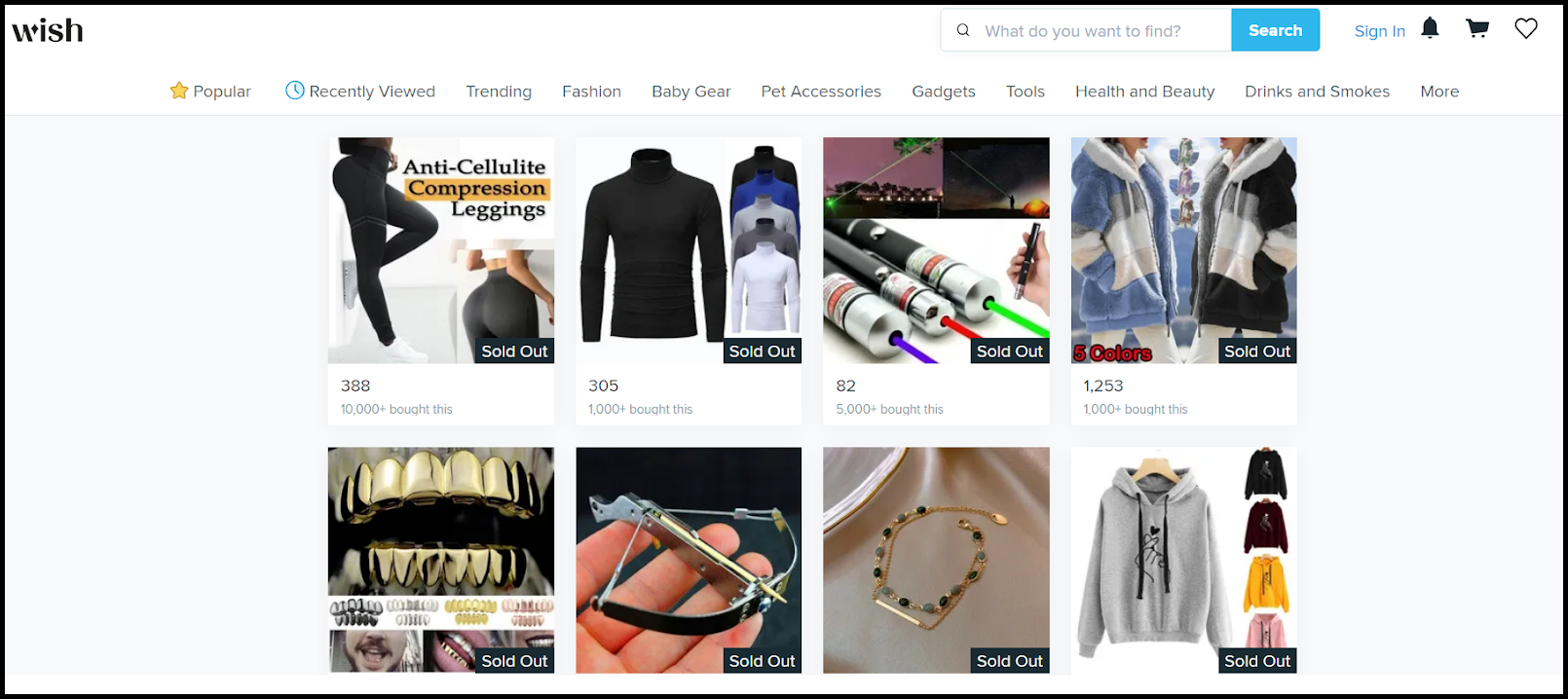
Taking advantage of influencer marketing, Wish has broadened its audience outreach by miles. Its close collaboration with various online influencers has resulted in explosive brand awareness, making it one of the best examples of the ecommerce growth strategy.
5) Collect behavioral customer data
To understand better, engage, and communicate with customers, brands should collect behavioral customer data. It helps them develop ecommerce growth strategies to better serve the targeted customer. You can easily analyze and determine how customers prefer to be engaged and want your brand. Understanding your customer’s behavior allows you to offer and adapt to their needs.
(continue reading: Hyper Personalize your Emails with Real-Time Behavioral Data)
Brand Example – Kroger
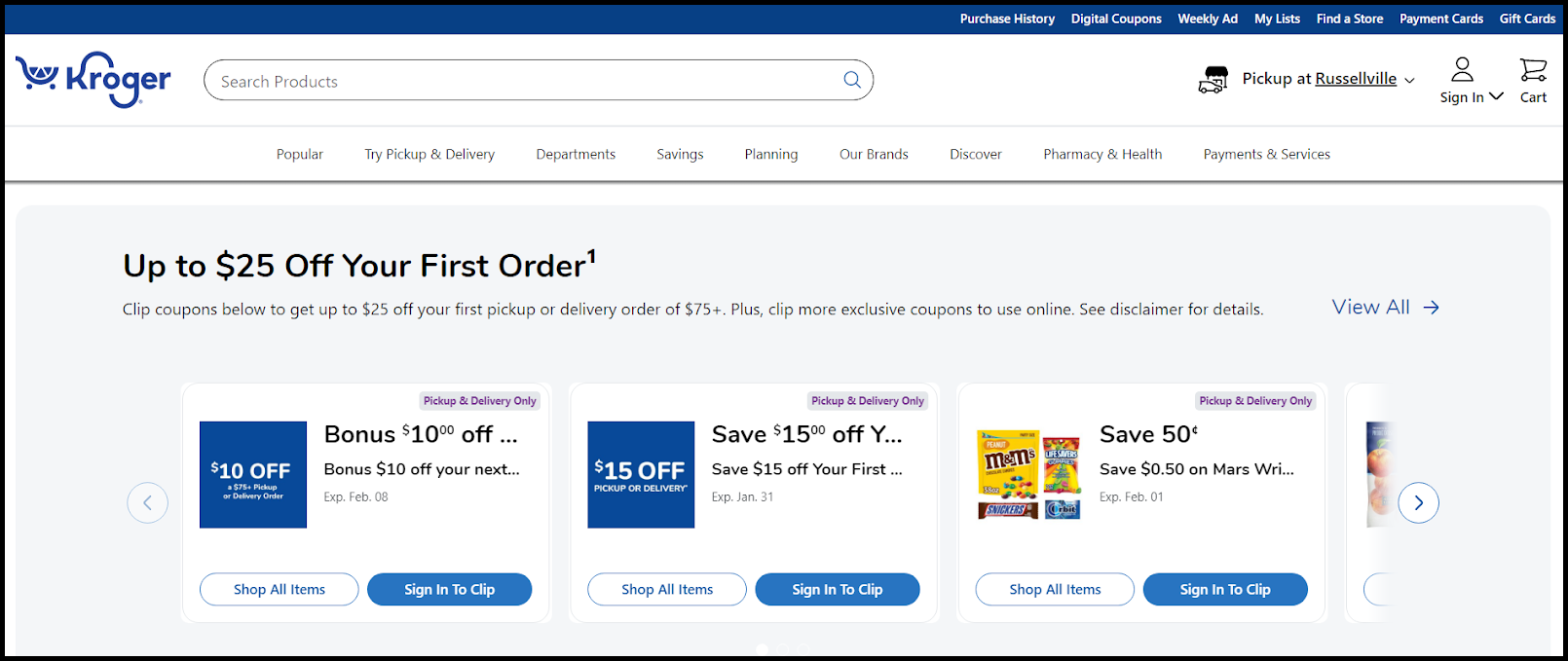
Kroger is a leading online grocery fulfillment company, it analyzes the collected customer data to cater better to the target audience and provide better service. Kroger can engage and deliver customer preferences using the latest AI technology and automation with behavioral customer data.
6) Segment customers.
Segmenting customers based on behavioral, and RFM would help you provide personalized responses and relevant marketing actions. Categorize your customers into groups based on their behavior or by analyzing their spending habits to offer exclusive customized customer experiences. Understanding and knowing your target audiences helps scale your ecommerce easily.
Brand Example – Chegg

Chegg understood the importance of customer segmentation and catering exclusive product lines for the targeted groups, resulting in the best strategy for business growth. Today it has diversified its offering to various customer bases by creating customer segments.
7) Offer a loyalty program to incentivize repeat purchases
Loyalty programs such as member-only discounts, rewards, promotions, etc are great ways to incentivize your customers to make repeat purchases. Through loyalty programs, you can encourage customer loyalty to the brand and increase revenue with repeat purchases. Offering loyalty programs has been the most successful approach for retaining customers and increasing their lifetime value to your brand.
(Continue reading: Best Customer Loyalty Apps to Boost Retention)
Brand Example – StitchFix
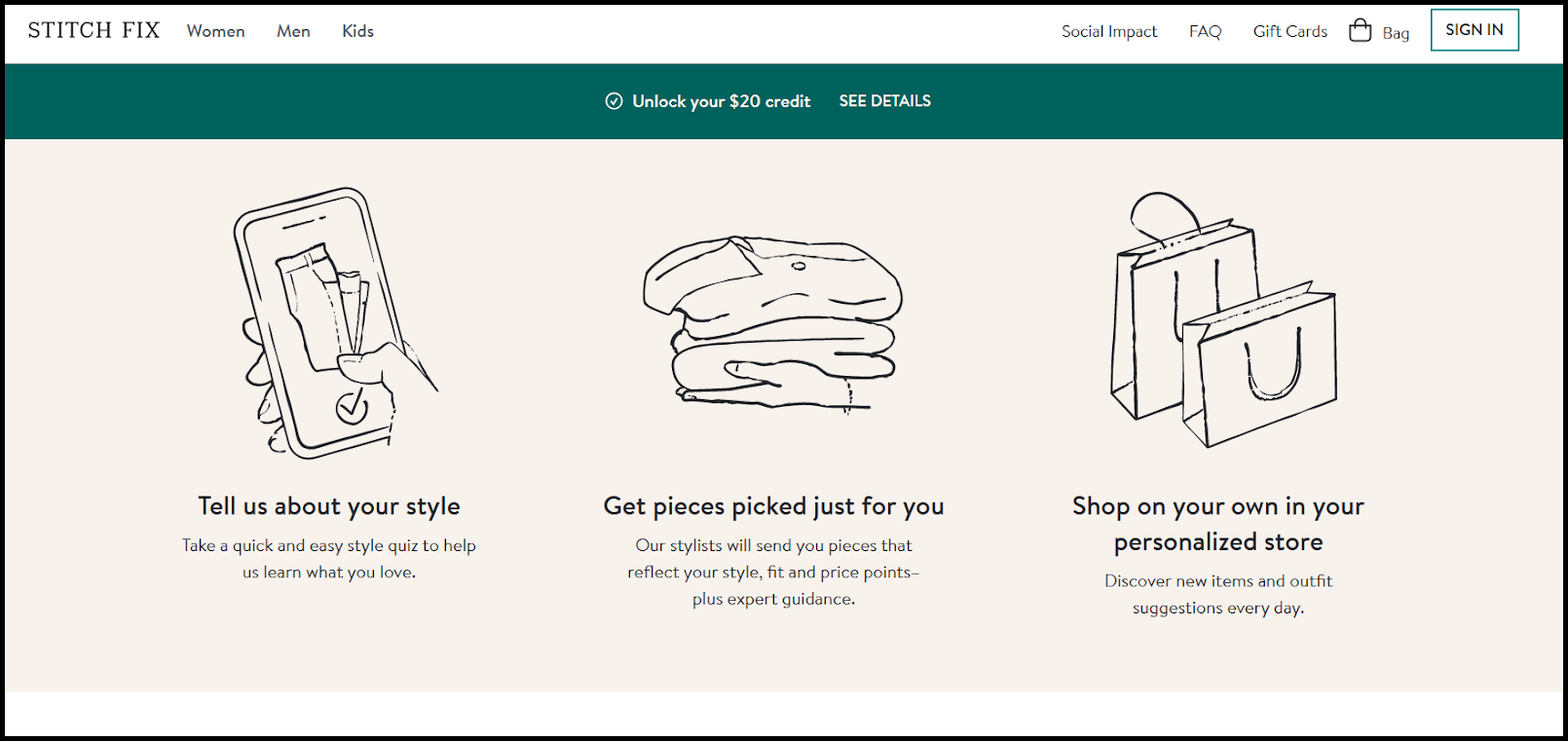
With an extensive loyalty program and generous return policy, StitchFix scaled its business model to new heights. The company has been focused on providing personalized products catering to individual customers and excelling at customer experience satisfaction.
8) Utilize email and SMS marketing to nurture relationships with customers
Providing customers with honest, high-quality, and value-added emails or SMSs would greatly benefit nurturing the relationship. Building authentic customer relationships takes a lot of focused initiatives, be it through engaging emails, promoting SMSs, or interactive offer emails. These two powerful email and SMS marketing channels complement each other to help flourish your brand with happy customers.
(Continue reading: Strategies to Increase Customer Retention with Email & SMS Marketing)
Brand Example – Wayfair
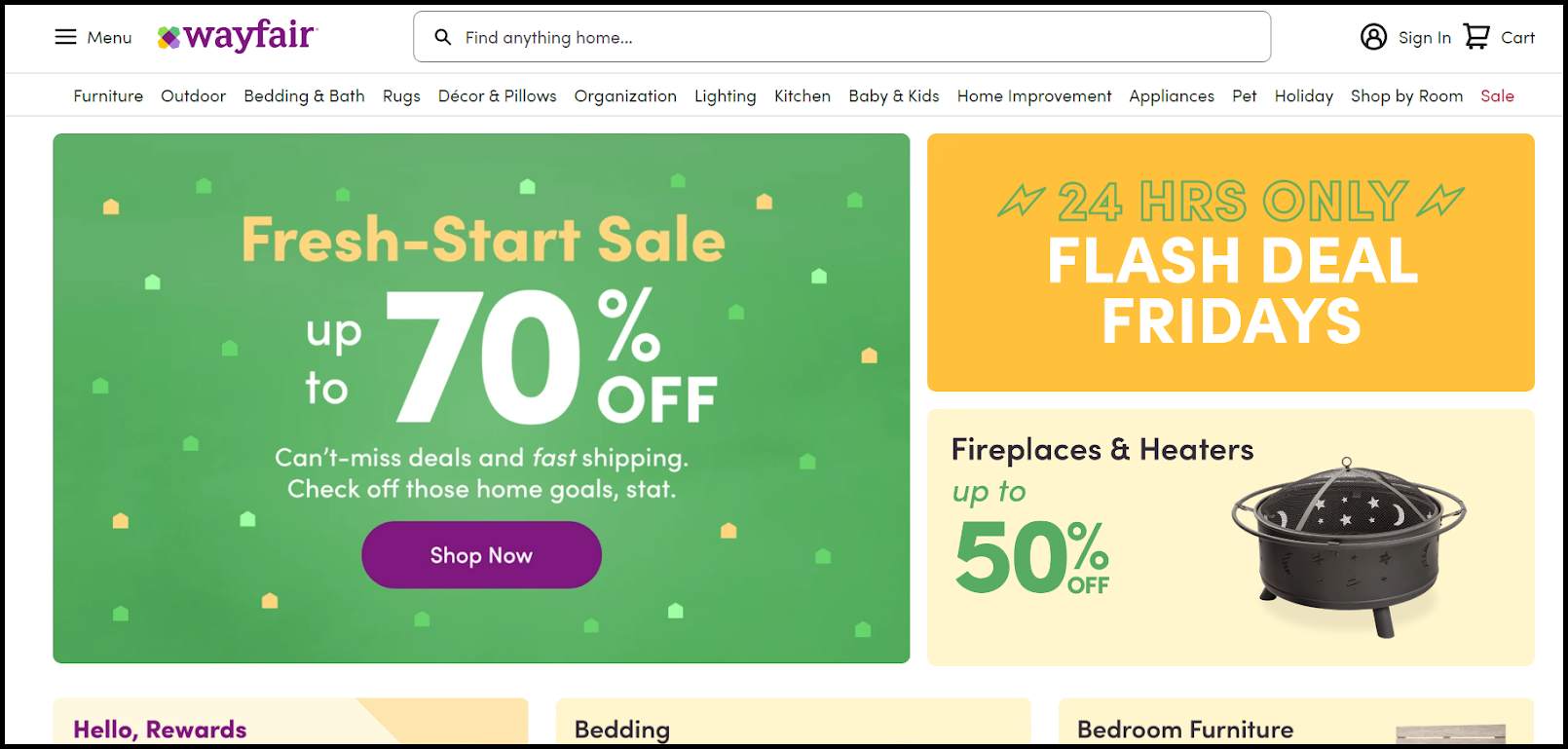
Wayfair stands out as a model of success in sustaining and expanding connections with existing customers. By utilizing email and SMS marketing channels to nurture target customers, the brand retained a healthy customer base.
9) Develop a mobile-friendly app
A mobile-friendly app for your ecommerce will help you stay ahead of the competition, considering that a major portion of the customer base relies on their smartphones. To reach your full outreach potential and target a wide range of audience, a mobile-friendly app is a must. Developing a mobile app would make your brand stay relevant now and in the future with the world moving towards the digital universe.
Brand Example – Warby Parker
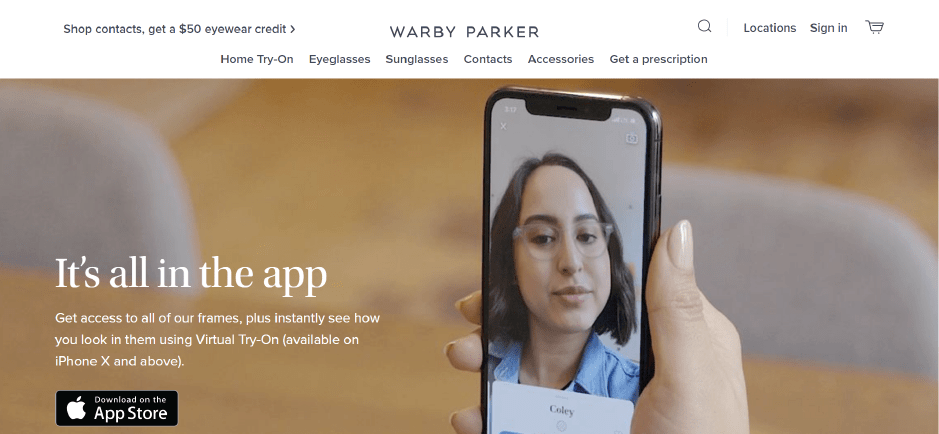
Image Source: Warby Parker
To cater to wider audiences and scale up the business model Warby Parker introduced its mobile app early days along with the website. Having a website and a mobile app helped the brand scale up its business and acquire new customers.
10) Turn Product Pages Into Sales Magnet
Having informative and compelling product pages with minimal clicks to the purchasing journey would make the shopping experience easy for your customers. Provide clear, concise, and relevant product descriptions with high-quality images and intuitive layouts to entice customers to purchase. Make sure not to duplicate product page content between similar products to keep the product relevant.
(Continue reading: A Breakdown of High-Converting Product Pages for your DTC Brand)
Brand Example – macy’s
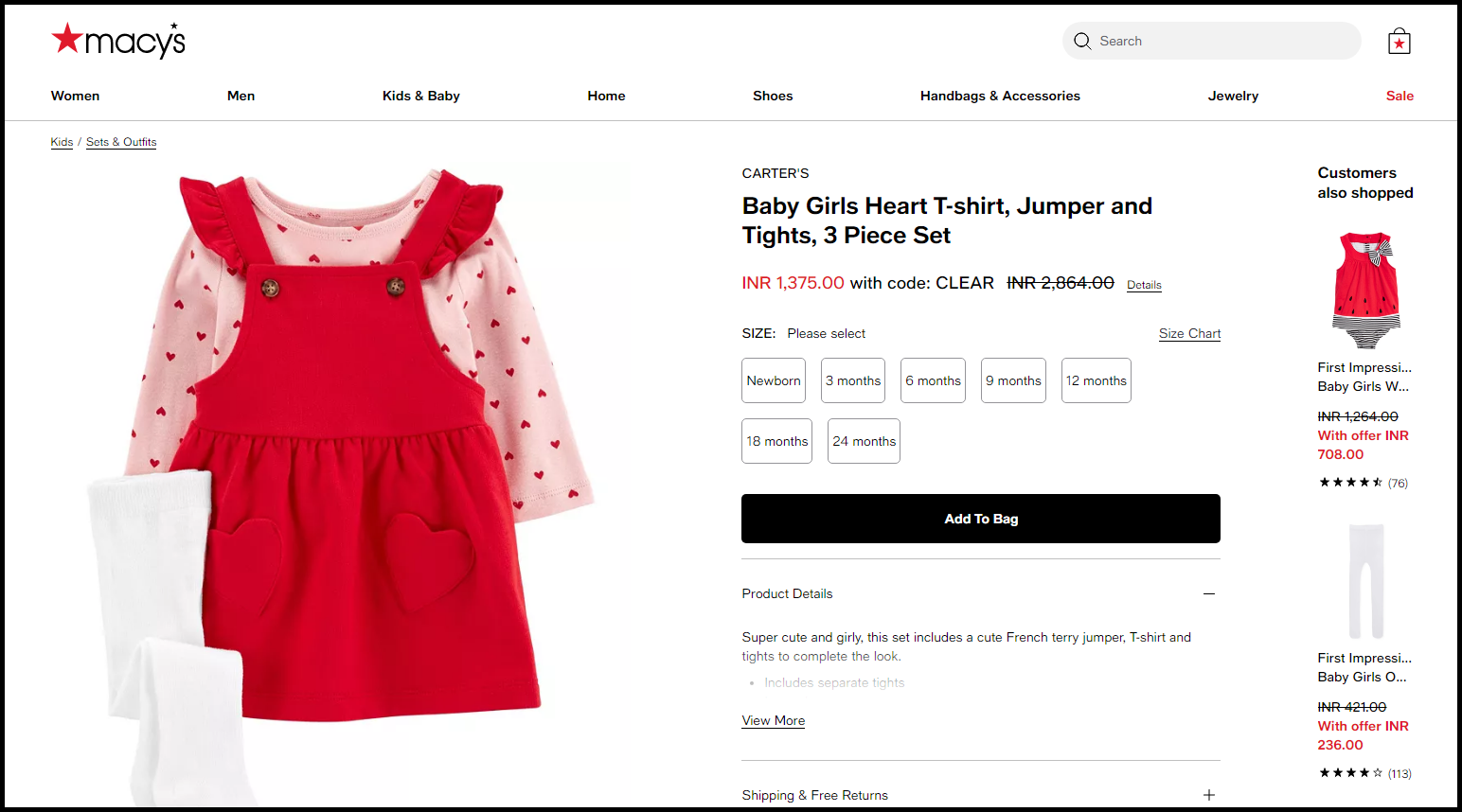
Macy’s is among the leading fashion giants with the most elaborative and visually pleasing product pages to lure customers to online shopping. Their simple yet attractive page layout is among the best sales magnet product pages.
11) Create a memorable unboxing experience
To create a happy customer base, creating a memorable unboxing experience for their purchases with personalized and unique packaging ideas would go a long way in keeping the brand value and customer satisfaction. Specialty packaging creates enhanced brand trust with customers and ensures the shipments arrive in perfect condition.
Brand Example – Burst Oral Care
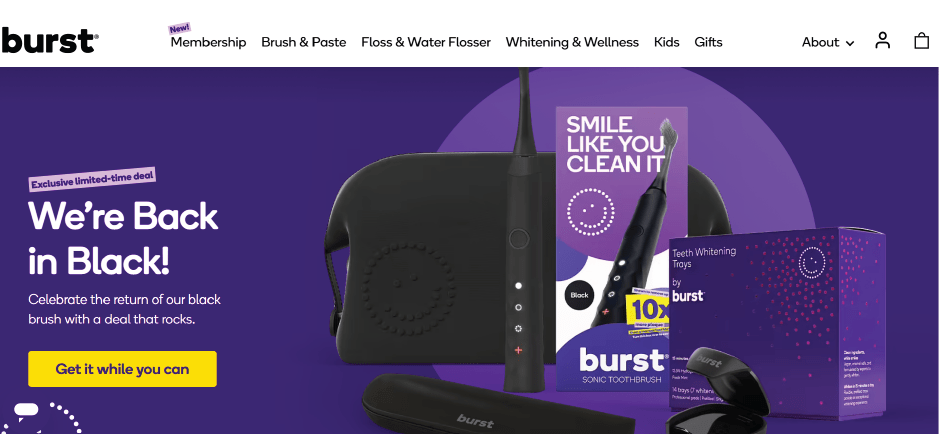
Image Source: Burst Oral Care
Burst Oral Care, a brand that packages its toothbrushes artistically within their boxes so that customers have an enjoyable experience when they first open them.
12) Reduce Friction In the Checkout Process
Remove anything that may cause hindrance to customers during the checkout process at the end of the purchase cycle. A smooth, simple, and short checkout process keeps customers breezing through the process with few inputs and flexible payment methods. Well-laid-out shipping costs, taxes, and other applicable fees right at the checkout would help your customers understand and continue.
(Continue reading: Game-Changing Strategies to Improve Your Ecommerce Checkout)
Brand Example – H & M
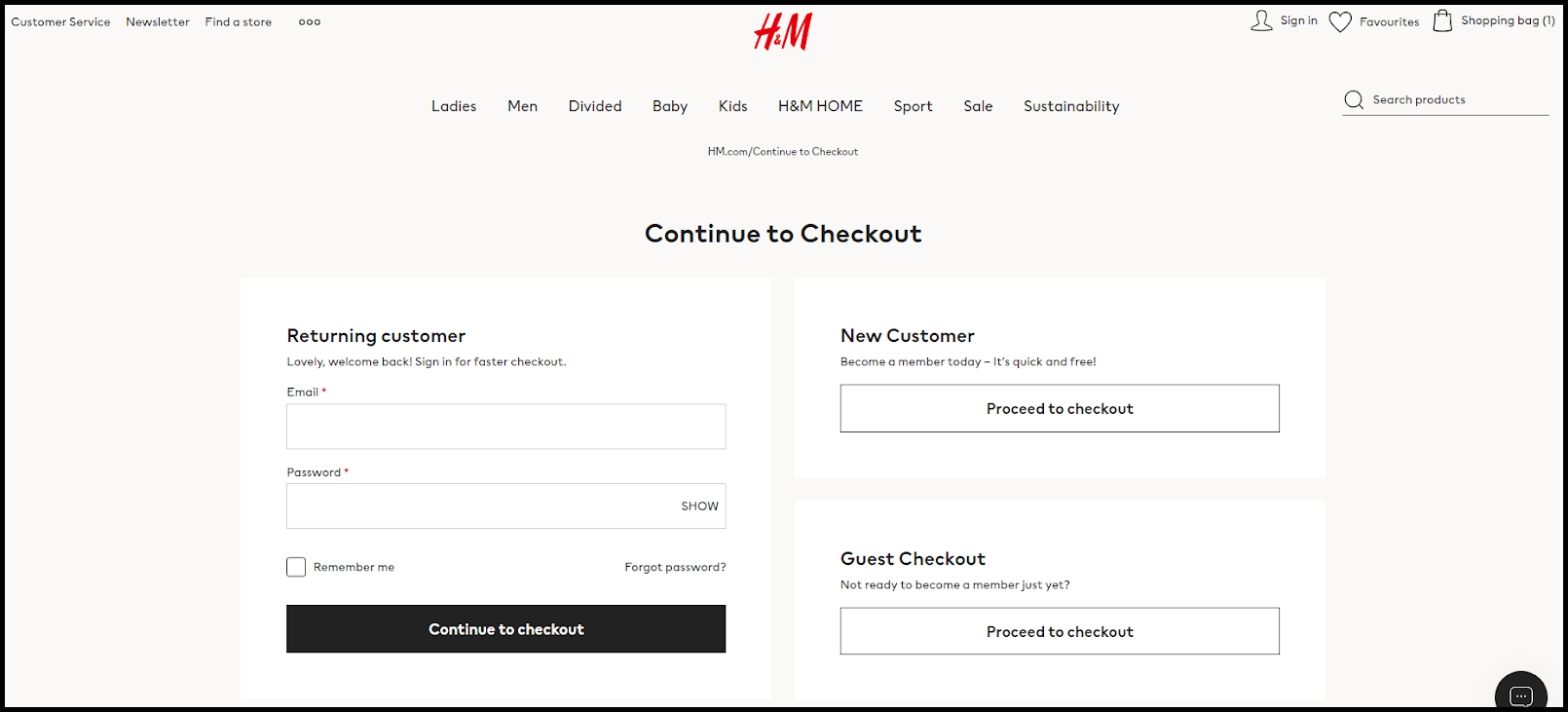
To breeze through the checkout process, H&M incorporates multiple options for customers to either login or create an account or Guest checkout. This short and simple checkout process helps customers check out as quickly as possible with the least friction and helps H&M gather their basic details.
13) Offer live support for customer service
Live support for customers through various channels and platforms throughout their purchasing life cycle is of paramount importance. It helps build trust and cordial relationships with your customer to attain instant satisfaction. If you maintain consistent live customer service to deliver real-time support Live chat or Live help line would help your customers make better purchase decisions and resolve problems quickly.
Brand Example – Chewy

Offering the best customer service, Chewy has established itself to be the leading pet supply ecommerce brand to visit. Their consistent live chat and live help support to help purchase customers’ required pet supplies made it a hit among pet owners.
14) Generate word of mouth by offering a referral program
Referral programs are a great initiative to spread the word of mouth of your brand, especially for ecommerce businesses. The primary goal is to acquire new leads from happy customers marketing your brand to potential customers. Creating a loyalty program for existing customers with return benefits offered will encourage them to be part of the referral initiative.
Brand Example – Casper
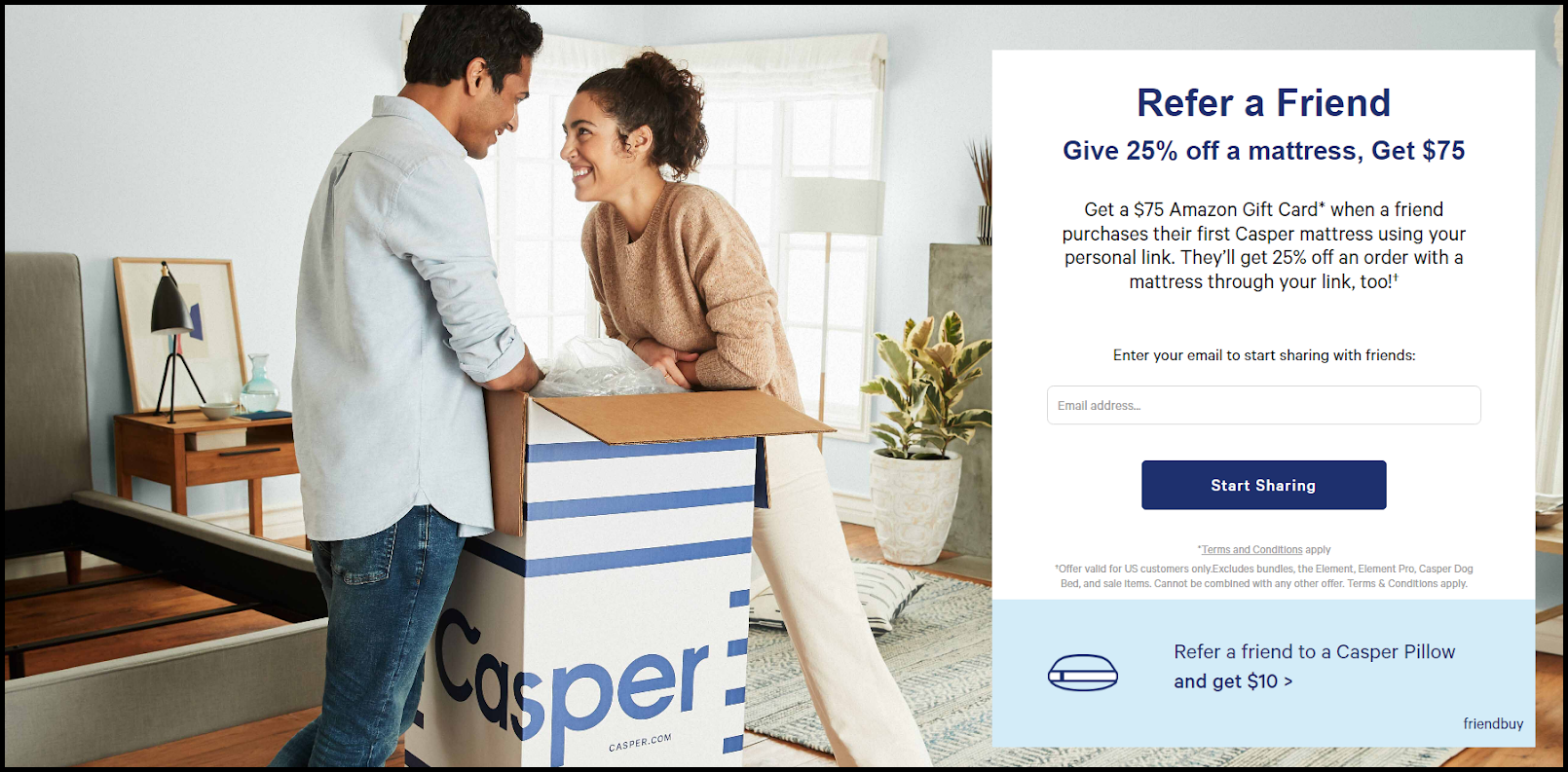
A proposition to get extra for spreading the word, inclusive for both, is a great referral initiative from Casper. By offering a 25% discount to newly referred customers and a $75 gift card for an existing customer, Casper is able to promote their brand and encourage happy customers.
The way forward for D2C brands
The future for D2C ecommerce brands looks very promising, with evidence from various manufacturing businesses jumping into the bandwagon to take advantage of connecting with customers directly. However, as and when this space grows exponentially, establishing unique and individual brand awareness becomes very challenging. To remain relevant in the space, brands must implement innovative ecommerce growth strategies.
You may also like
Essential resources for your success
